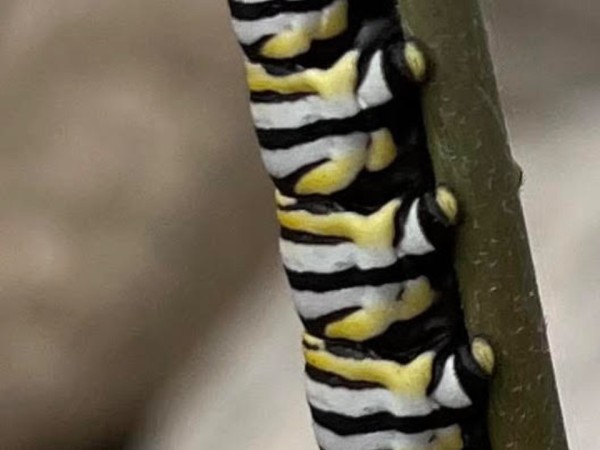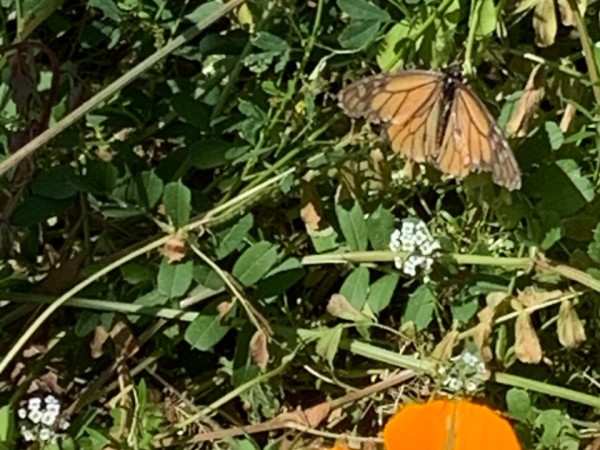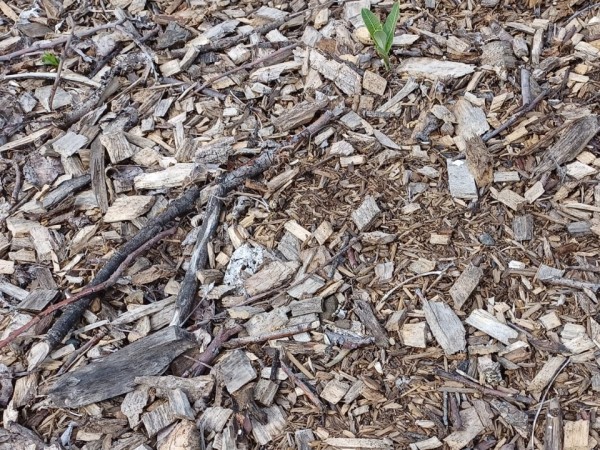2024 Spring Letter #5: Western Monarch Population News From Gail Morris
Challenges and Triumphs
Submitted: April 8, 2024 and updated April 23, 2024
Western Monarchs Update
This year monarchs are navigating a series of weather-related roller coasters as they continue their journey to the summer breeding grounds. Warm, sunny days have alternated with waves of intense storms last month followed by cold temperatures and back to balmy weather. Despite the many obstacles, monarchs are continuing to move and slowly stretch their range from the coast and often to finding milkweed up and waiting.
Recent Monarch Sightings
During the last month, monarch sightings of adults and larvae were reported in the southern and western half of California and the deserts of Arizona. Recently they stretched more inland outside of Sacramento, California.
Lynda in Litchfield Park, Arizona, west of Phoenix, noticed several monarchs in March. “Have seen Monarch(s) several times in the last week. This was the first opportunity I’ve had to try to get a photo.”
Meanwhile, Thomas saw a monarch laying eggs on six desert milkweeds [A. subulata] in Cathedral City in the Sonoran Desert region of California in mid-March. Then two weeks later on March 29, he reported, “9 larvae sighted on 6 desert milkweed plants, 1"-1.5" in length.”
In Bakersfield in the Central Valley of California, Heidi reported a monarch flying above a yellow flowering lantana.
Just outside of Sacramento in Placerville, Pamela saw a monarch near the edge of Finnon Lake in Mosquito on April 3.
More recently Lindsay spotted a monarch in Yuma, Arizona, on April 20.
Not all monarch sightings were in the desert! In fact, Heidi had a surprise visiting Santa Catalina Island. On March 29, “I saw one adult monarch flying over the beach in Avalon.”
In southern California, Judy in Oceanside found one monarch on April 3 in her yard. “Beautiful, bright color, very active, stopped and stayed on milkweed plants for a few seconds numerous times.”
Judy in Oceanside on April 3: “Beautiful, bright color, very active, stopped and stayed on my milkweed plants for a few seconds numerous times.”
Reports of large numbers of monarchs in one location are unusual in spring, but Joyce reported multiple monarchs in Mountain View on March 31. “We saw 18 monarchs at Google today enjoying the sunny afternoon. Most were circling about or sunning themselves. Most were quite faded and tattered like this one. Not much color left and the wings were shredded but he flew like a champ. There is not much milkweed in the area anymore as they don't appear to be planting anymore here.”
Other monarchs are likely migrating in more remote areas and we are looking forward to your sightings as they arrive. We are hopeful to see a few milkweeds up to greet monarchs as they arrive.
Diane in San Luis Obispo, California, was excited to report on April 1, “Native milkweed is just beginning to sprout.”
Meanwhile, further north, Breanna in Pleasant Hill noticed, “Common Milkweed sprouts from transplanted rhizomes last Fall from a friend.”
Our furthest north milkweed report came from Greg in Benton City, Washington, who found Showy Milkweed just breaking ground on April 3.
Greg in Benton City, WA, found “Show Milkweed” just emerging on April 3.
From the Field
Sometimes monarchs can race through the fields faster than where the milkweed is up. This week we heard there was a possible monarch sighted in Medford, Oregon. While this sighting was not sent to Journey North for our confirmation, it did spur concern about the availability of milkweed from some experts in the field. This would be a very early monarch sighting for Oregon. In fact, you may remember Dr. David James often shared his report from the Trinity River in northern California over Memorial Day weekend nearly a month away south of Oregon. If monarchs are racing this year and outrun the milkweed up, they run the risk of laying many eggs on small shoots that may be unable to successfully feed the day and night hunger spree of large fifth instar larvae.
Dr. Tom Landis in Oregon has been following milkweed in the Northwest and contemplated the possibilities. “The concern is the problem of phenological mismatch. When monarchs migrate north earlier than usual, there’s a danger if they would find milkweeds to lay eggs on.” Several years ago, in 2015, he heard of a female monarch “do an egg dump on the shoots of showy milkweed that were just emerging.” So, we reached out to Linda Kappen, also in Oregon, to see what milkweeds she’s seen around the area. “I hope I have assured you that far Northern California and southern Oregon have plenty of milkweed for migrating north. I have confirmed that Heartleaf is going strong in the foothills, home gardens, and wild milkweeds as well. We as a group have done outreach for many years and some of our neighbors in Douglas County and farther counties to the north of us have much milkweed growing as well, so hopefully, they can continue north. Happy Earth Day!” The news sounds hopeful for monarchs to expand their numbers as they continue their journey north to their summer breeding grounds. Let’s watch the reports and see what will happen.
Send in your reports!
Monarch sightings are usually sparse this time of year as they lay eggs increasing the population on their migration to the summer breeding grounds. If you are lucky enough to see a monarch, please report your sighting of any adult, eggs or larvae to Journey North. Your detailed description of what you see can include -- but is not limited to -- the monarch’s gender and activity. If known, include the type of flowers if they are nectaring or milkweed type if laying eggs. We also encourage you to report milkweed up! Photos are encouraged and welcomed with all your reports.
Gail Morris is the Coordinator of the Southwest Monarch Study (www.swmonarchs.org and the Western Monarch Advocates. She is also a Monarch Watch Conservation Specialist and the Vice President of the Central Arizona Butterfly Association. The Western Monarch Population News is based on comments provided to Gail Morris. We hope to increase the number of sightings and therefore photos and comments entered into Journey North. We rely on the volunteers who communicate regularly with Gail and who agree to participate in our effort to increase awareness of the population of Western Monarchs. You can reach her at gail@swmonarchs.org




